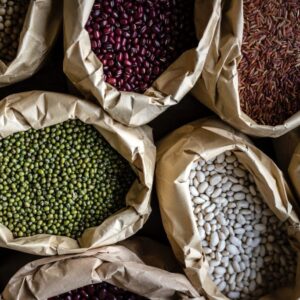
“How do you cook beetroot?”
I get asked this question a lot. So many of us have tried the old ‘at home’ beetroot trick and failed miserably; but what if I told you that there were 3 simple and effective ways to maximise the taste of your ‘at home’ beetroot prep? Would you love me then? 😉
But first…
Why should we eat Beetroot?
Beets are high in immune-boosting vitamin C (great for the immune system and boosting our adrenal health), fibre (which is good for EVERYTHING including balancing hormones, maintaining a healthy gut micro-biome, monitoring cholesterol, weight-loss and more), and essential minerals like potassium (essential for healthy nerve and muscle function) and manganese (which is good for your bones, liver, kidneys, and pancreas). Beets also contain the B vitamin folate, which helps the body in a number of ways, including methylation, development of a healthy foetus and more. The betalain pigments in beets have been known to support your body’s detoxification process, whilst the high nitrate content of beets has been linked to improved stamina and performance in low-intensity exercise (more on this later).
What about Beet Greens?
If you shop at your local farmer’s market, you’ll more than likely purchase your beets with the beet greens attached – don’t throw these away! Beet greens (or beet leaves) are a wonderful source of iron, calcium, magnesium, vitamin K, vitamin A, vitamin C, potassium, manganese and more. Treat beet leaves as you would spinach leaves, cut leaves off at the stem where the leafy portion ends and blanch in boiling water (with saucepan lid off) for 1 minute (no longer, otherwise nutrient density is compromised). This will make them softer and sweeter to consume. Throw them into a soup, casserole and/or a frittata (my favourite) with onion – delish!
But aren’t beets high in sugar?
Beets are a high sugar vegetable, so I recommend adding them to your routine in a whole-food form; this way, the high fibre content of the vegetable helps to offset the effect on your blood glucose levels. This brings me to the point of this post… How to cook them!
Cooking Beetroot
So many of my friends opt to peel, chop and roast their beetroot with other vegetables in the oven; whilst this works for some, I often find this means that the beetroot ends up dry and tasting a little on the “earth-y” side. So what do I do? I personally slow-cook my beets, but boiling them on the stove top or in a pressure cooker are all great options.
How to Cook Your Beets (Oven) 101 (My #1)
- Pre-heat your oven to 180C.
- Chop the ends off your beetroot. If your beetroot is large, you might want to chop them in half to reduce cooking time. Do not peel them!
- Wrap each beetroot in baking paper, and then again in aluminium foil (this will avoid aluminium foil contamination) before placing them on a baking tray.
- Bake in the oven for 60 minutes or until tender and cooked through.
- Remove from oven, set aside to cool slightly. Unwrap beets and under running water, slowly peel off the beetroot skin with your fingers(optionally wearing gloves). Set beets aside.
- Chop beets into bite sized pieces, toss in red wine vinegar (optional) and serve
- Store left-over beets in an air-tight glass container in the fridge (I’ve stored them for 2 days, they’ve always been eaten before-hand).
How to Cook Beetroot (Pressure Cooker) 101 (My #2)
- Prepare pressure cooker with required water and steam basket, as per product packaging.
- Remove the leaves and stems from beets, leaving approximately 2-3cm of the stems attached.
- Put the beets in the steamer basket.
- Close and lock the lid of the pressure cooker. For stove top pressure cookers, turn the heat up to high and when the cooker reaches pressure, lower to the heat to the minimum required by the cooker to maintain pressure. Cook for 20-25 minutes at high pressure.
- Release pressure and check to ensure beetroots are tender/a skewer easily pierces the flesh. If it doesn’t, cook for 5 additional minutes at high pressure, with normal pressure release.
- Move the steamer basket to the sink and run cold water over the beets to cool. Then, using your fingers or a dull knife, remove the skin.
- Chop beets into bite sized pieces, toss in red wine vinegar (optional) and serve
- Store left-over beets in an air-tight glass container in the fridge (I’ve stored them for 2 days, they’ve always been eaten before-hand.
How to Cook Your Beets (Boil) 101
NOTE: Just be mindful that boiling beetroot (or any other fruit and vegetable) for too long, can compromise nutrient density.
- Remove the leaves and stems from beets, leaving approximately 2-3cm of the stems attached.
- Wash beetroot under cold water to remove any dirt.
- Place beetroot in boiling water for approximately 45minutes or until tender (a fork should easily pierce the vegetable when ready). Remove each beetroot from water. Cool under running water.
- Using your fingers (optionally wearing gloves) or a dull knife, remove the skin.
- Chop beets into bite sized pieces, toss in red wine vinegar (optional) and serve
- Store left-over beets in an air-tight glass container in the fridge (I’ve stored them for 2 days, they’ve always been eaten before-hand).
Looking to try your new skills? My Roast Pumpkin & Beetroot Salad is a crowd pleaser! Honestly, I am asked to make this salad whenever we attend BBQ’s and other functions.






0 Comments